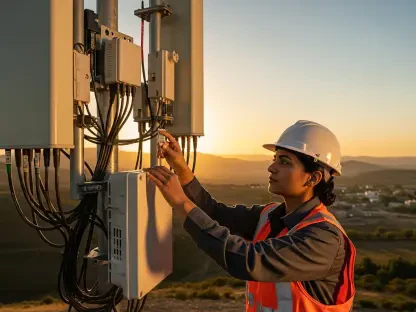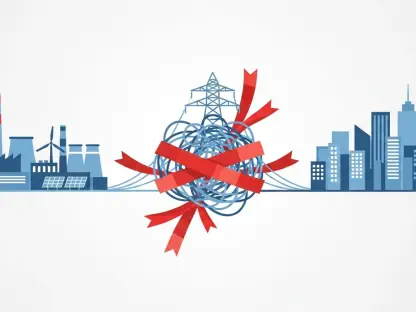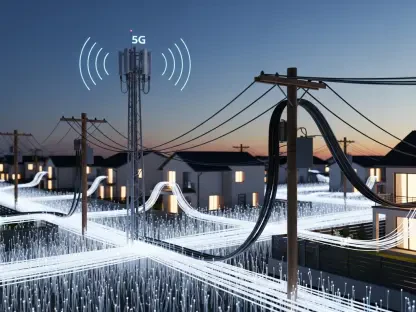Introducing Vladislav Zaimov, a renowned expert in telecommunications, whose profound understanding of enterprise telecommunications and risk management of networks makes him a compelling voice in discussing the future of broadband technology. The growing discourse around satellite broadband versus fiber has intensified, given the rapid advancements and deployment strategies in both arenas.
What are the main limitations of satellite broadband compared to fiber?
Satellite broadband is primarily challenged by its bandwidth capacity and inherent latency issues, which are notoriously higher than those of fiber optics. While fiber transmits data at the speed of light through cables, satellite data must travel to a satellite in space and back, which naturally introduces delays. Moreover, the limited bandwidth capacity significantly restricts the availability and performance of satellite internet, especially in densely populated regions.
How does bandwidth capacity affect satellite broadband coverage?
Bandwidth capacity is crucial for coverage as it dictates how many users can simultaneously utilize the network without experiencing slowdowns. In areas with limited capacity, users may end up on waitlists, unable to access service until additional satellites or capacity is made available. This makes effective coverage a significant challenge, especially as more people seek connectivity.
Can allocating more spectrum solve the capacity issues faced by satellite providers?
Allocating more spectrum could alleviate some problems, but it’s not a complete solution. The complexity of managing and deploying additional satellites, along with their coordination to prevent interference, poses logistical challenges. Additionally, the physics of satellite communications mean there are inherent limits to the throughput achievable with the currently available technologies.
Why does satellite internet suffer from higher latency and packet loss than fiber?
The higher latency is due to the round-trip distance data must cover when traveling to space and back, compared to fiber’s terrestrial paths. Packet loss can occur due to atmospheric conditions affecting the signal or due to the congestion resulting from high usage over limited capacity.
What kinds of online activities are most affected by satellite’s higher latency and packet loss?
Activities like online gaming and real-time video conferencing suffer the most. These applications require fast, steady data streams, and even minor delays or interruptions can lead to a poor experience. HD video streaming might also face challenges if there are data caps restricting quality or duration.
How do the costs of satellite broadband compare with fiber and 5G?
Satellite broadband is generally more expensive. The upfront costs for necessary equipment and the recurring costs of data plans tend to be higher than those for fiber or 5G, which provide more competitive pricing, especially in urban settings. The technological infrastructure for fiber and 5G offers economies of scale that satellite services currently cannot match.
Why is satellite considered a more expensive option for consumers in rural areas?
While the installation infrastructure might be cheaper without the need for laying cables, the high cost comes from the service itself. The pricing structures often reflect the premium on satellite technology, which despite its breadth, lacks the efficiency or speed of fiber, leading to higher subscription fees.
How does the initial cost of Starlink compare to the monthly data plan expenses?
Starlink’s upfront equipment cost of $349 is coupled with a monthly expense of approximately $120. While there’s a “Residential Lite” option at $80, the initial investment is still substantial, highlighting a barrier to entry that might deter price-sensitive customers.
What price range can consumers expect for fiber broadband services?
The cost for fiber broadband typically ranges from $50 to $200 monthly, varying by data speeds, location, and service provider. Notably, many fiber options come with inclusive equipment costs, which can make them a more attractive option financially compared to satellites.
Why might satellite data be more expensive than data from terrestrial 5G networks?
The significant cost differentiation arises from how satellite data is transmitted over larger distances and more complex infrastructure, creating higher operational expenses. Providers pass these costs onto consumers, unlike the more efficiently scaled terrestrial 5G networks.
Despite its drawbacks, why is the satellite market expected to grow significantly?
The potential to reach areas where fiber is not economically viable makes satellite broadband a vital growth market. Additionally, advancements in technology and an increase in the number of satellites being deployed mean improvements in service are expected, driving market expansion.
What potential role does satellite broadband have in areas lacking cable and fiber access?
Satellite broadband presents an essential solution, providing connectivity where traditional infrastructure is unavailable or impractical. This role is especially crucial in bridging the access gap in remote or underdeveloped regions where laying cables is prohibitively expensive.
How do analysts view satellite’s performance in tasks like video conferencing and downloads?
Analysts believe satellite broadband is adequate for tasks like video conferencing and downloading, given current technological capabilities. However, it’s acknowledged that the cost often outweighs the benefits when considering its role in reducing the digital divide.
Are there any specific technological advancements needed for satellite to become a true alternative to fiber?
For satellite to rival fiber, there would need to be major advancements in reducing latency and increasing bandwidth efficiency. Innovations in satellite technology could potentially lessen these discrepancies, making it a more viable competitor to fiber-optic systems.
How does the cost of satellite broadband impact efforts to close the digital divide in America?
High costs directly impede efforts to bridge the digital divide, limiting access for underprivileged communities. Affordable alternatives are essential to ensuring equitable access to the internet across socioeconomic barriers, underscoring the need for competitive pricing in satellite services.
Do you have any advice for our readers?
Consider your internet needs and location carefully. While satellite offers benefits in areas lacking other options, its costs can be prohibitive. Exploration of different solutions and staying informed of technological advancements can help in making a sound decision.









